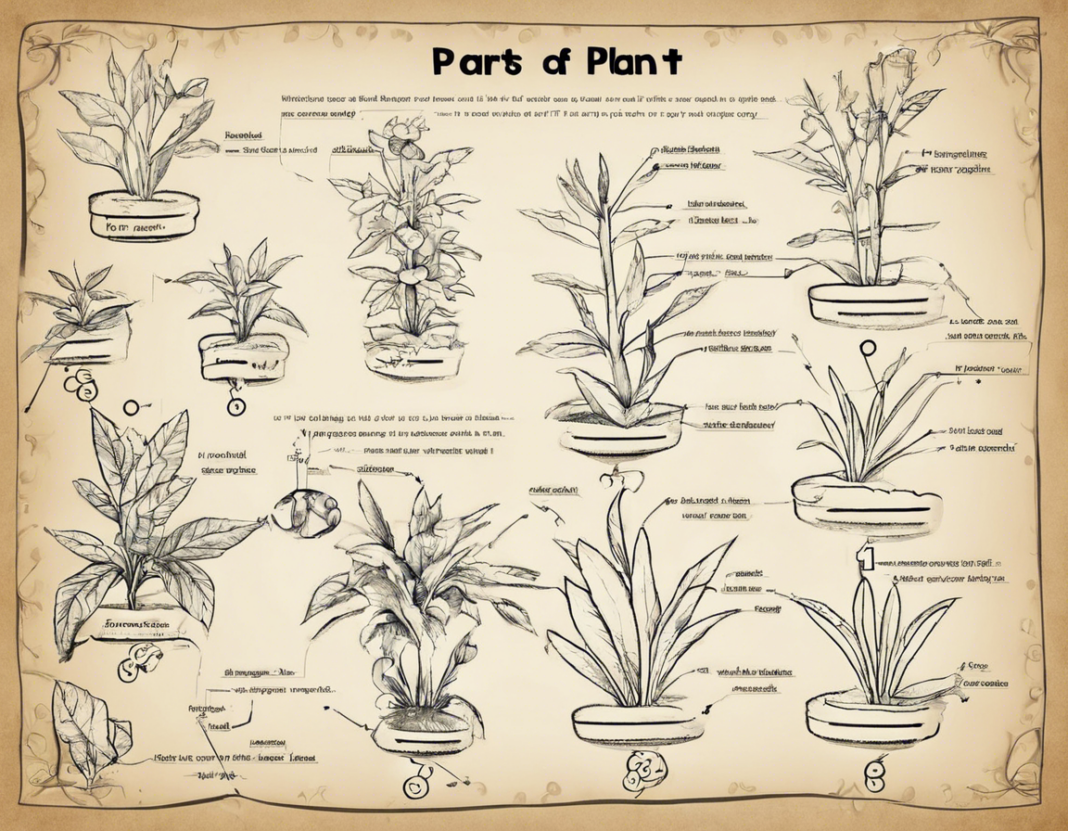Plants play a vital role in our ecosystem, providing us with oxygen, food, and beauty. Understanding the different parts of a plant is essential for kids to appreciate and learn about the importance of nature. In this article, we will explore the various parts of a plant in detail, along with a fun worksheet at the end to help reinforce the learning in an interactive way.
Parts of a Plant
1. Roots
The roots of a plant are usually found below the ground. Their primary function is to anchor the plant in the soil and absorb water and minerals. Roots come in various shapes and sizes, with some plants having deep roots and others having shallow ones.
2. Stem
The stem of a plant provides support to the plant and helps transport water and nutrients from the roots to the leaves. Stems can be thin or thick, depending on the type of plant.
3. Leaves
Leaves are where photosynthesis takes place, allowing the plant to make its food using sunlight, water, and carbon dioxide. Leaves come in different shapes and sizes, and they are essential for the plant's survival.
4. Flowers
Flowers are the reproductive part of a plant. They attract pollinators like bees and butterflies and eventually develop into fruits containing seeds for the next generation of plants.
5. Fruits
Fruits contain seeds and develop from the fertilized ovary of a flower. They come in various shapes, sizes, and colors, and they serve as a way for plants to spread their seeds.
6. Seeds
Seeds are crucial for the continuation of plant life. They contain all the necessary nutrients and genetic information for a new plant to grow. Seeds can be dispersed by wind, water, animals, or even humans.
Fun Plant Parts Worksheet for Kids
Now, let's have some fun while learning about the parts of a plant. Below is a worksheet designed to engage kids in a hands-on activity:
Plant Parts Matching Game
Instructions: Match the plant parts with their respective functions.
-
Roots
Function: Absorb water and minerals from the soil. -
Stem
Function: Provides support and transports nutrients throughout the plant. -
Leaves
Function: Where photosynthesis occurs, creating food for the plant. -
Flowers
Function: Attract pollinators and develop into fruits containing seeds. -
Fruits
Function: Contains seeds for the next generation and serves as a way to spread them. -
Seeds
Function: Contains nutrients and genetic information for a new plant to grow.
Engaging Activities for Kids
-
Plant a Seed: Let kids experience the miracle of growth by planting a seed and watching it sprout.
-
Nature Scavenger Hunt: Explore the outdoors and identify different types of plants and their parts.
-
Leaf Rubbing: Capture the intricate details of different leaves by doing leaf rubbings with crayons and paper.
-
Craft Time: Get creative and make crafts using different parts of plants like leaves, flowers, and seeds.
Frequently Asked Questions (FAQs)
-
Why are roots important for plants?
Answer: Roots anchor the plant in the soil and absorb water and minerals necessary for growth. -
What is the function of leaves in a plant?
Answer: Leaves perform photosynthesis, producing food for the plant using sunlight, water, and carbon dioxide. -
How do flowers help plants?
Answer: Flowers attract pollinators and develop into fruits containing seeds for reproduction. -
Can all plants produce fruits?
Answer: No, not all plants produce fruits. Only flowering plants have the capability to produce fruits. -
Why are seeds essential for plants?
Answer: Seeds contain all the necessary nutrients and genetic information for a new plant to grow and are crucial for the continuation of plant life.
Exploring the parts of a plant can be a fascinating and educational experience for kids. By understanding the role each part plays in a plant's life cycle, children can develop a deeper appreciation for nature and the environment around them. Encourage kids to observe and interact with plants to enhance their learning and foster a love for the natural world.

